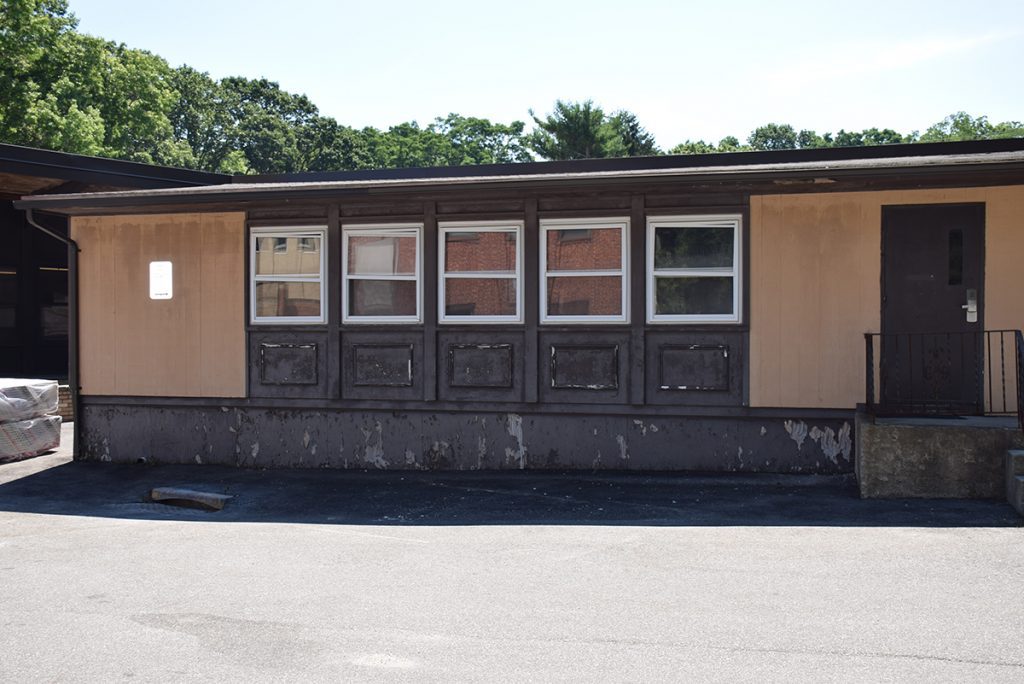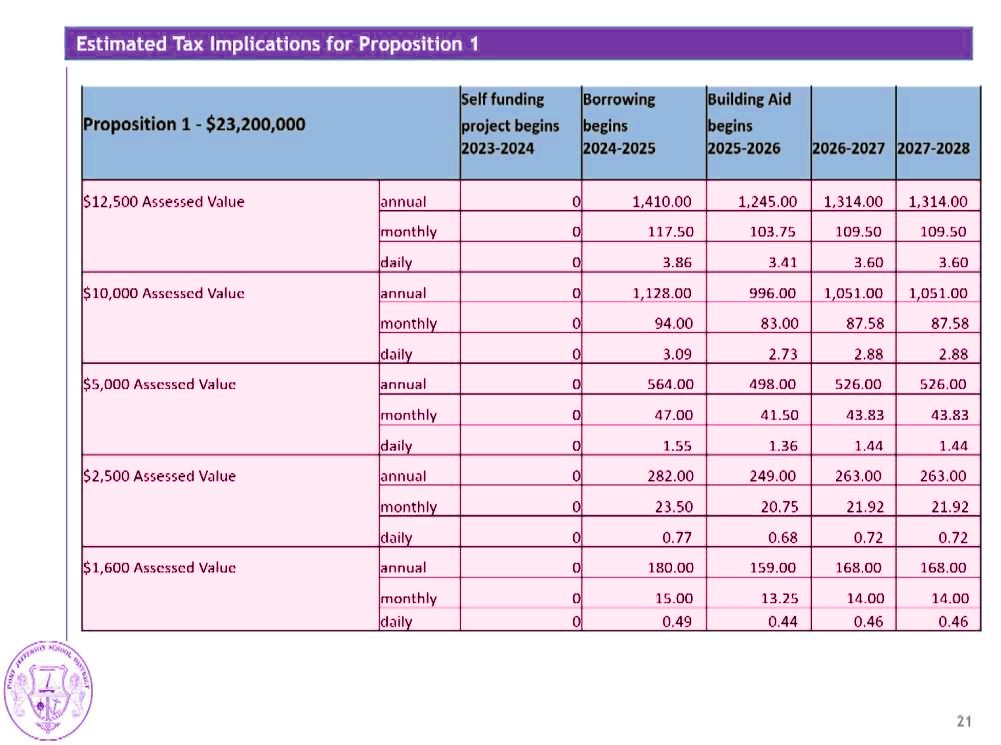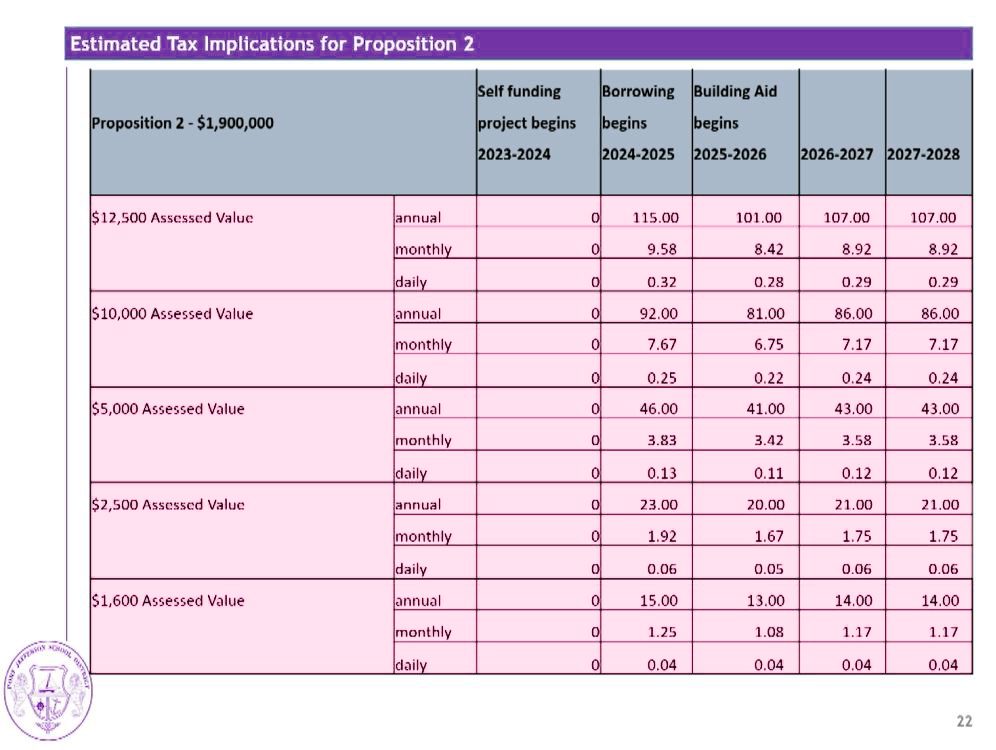Proposition 1 defeated (school infrastructure improvements)
Yes: 474
No: 498
Proposition 2 defeated (artificial turf athletic field)
Yes: 239
No: 734
Proposition 1 defeated (school infrastructure improvements)
Yes: 474
No: 498
Proposition 2 defeated (artificial turf athletic field)
Yes: 239
No: 734
The Village of Port Jefferson reignited a time-honored tradition last weekend during its 26th annual Charles Dickens Festival.
Hundreds of community members, visitors, business groups and local organizations participated in the festivities from Friday, Dec. 2, to Sunday, Dec. 4.
The show went on despite hard rains and gusting winds throughout the morning and early afternoon Saturday. Mayor Margot Garant, decked out in traditional Dickensian garb, commented on the turnout in the face of these conditions.
“To me, it just shows how important this festival is to not just this community but kids coming from St. James and beyond who are coming to see Santa,” she said. “It’s just magic, and rain or shine we’re going to be doing Dickens.”
Deputy Mayor Kathianne Snaden concurred with this positive outlook, regarding the festival as another means for community-building. “It’s heartwarming to see everybody still supporting this festival,” she said.
Trustee Stan Loucks commented on the uniqueness of the opportunities afforded through the festival and the steady growth of the events over its nearly three decades in existence.
“It’s grown every single year, and it’s just the most festive time of the year,” he said, adding, “I love the whole atmosphere, the village center. It’s a very special place, and I look forward to this every year.”
The program across all three days was loaded with special events featuring the various elements that formulate this distinct village’s character. The heart of Port Jeff was on full display, from its downtown business sector to its local history, public institutions and more.
At the Bayles Boat Shop, local shipbuilders showcased their ongoing work to construct a 25-foot whaleboat honoring the village’s Revolutionary War heritage.
John Janicek, treasurer of the boat shop’s nonprofit arm, the Long Island Seaport and Eco Center, detailed how the whaleboat ties together various threads of Port Jeff’s historical roots.
“It not only ties in the historical aspect that Caleb Brewster performed here during the Revolutionary War and [the role] Port Jefferson played, but it also ties in our shipbuilding aspect, too,” Janicek said. “We’re getting a lot of support from the village on this. They see this as something the whole village can get their arms around and embrace, similar to the Dickens Festival.”
Over at the Drowned Meadow Cottage on the corner of West Broadway and Barnum, local historians greeted visitors with guided tours detailing Port Jefferson’s strategic position during the Revolutionary War. They shared stories of local patriots whose involvement in the Culper Spy Ring helped advance the cause of American independence.
Village historian Chris Ryon discussed how the Dickens Festival offers a platform to promote local history to residents and visitors alike.
“We take the people from Dickens and tell them how Port Jefferson was involved in the Culper Spy Ring,” he said. “It’s another group of people that we can bring in.”
Mark Sternberg, Culper Spy Ring historian at the Drowned Meadow Cottage, offered a unique take on Dickens. He remarked upon the intersection of the Dickensian and Revolutionary periods and how people today can relive tradition and rehear the lore of the past.
He said, referring to the American spies, “A lot of these people survived into the 1800s, and the stories of the American Revolution were told during the 1800s. For us to tell stories about the American Revolution as part of the Dickens Festival, it’s what they would have done.”
The historian added, “It’s keeping with the tradition of telling a story about the founding of our nation, even in later periods. Now Charles Dickens may not have talked about it because he was British, but here in America during the Victorian era, we would have.”
Along with stories of the past, the village exhibited the musical talents of local students. At the Port Jefferson Free Library, the Edna Louise Spear Elementary School chamber orchestra delivered moving string performances, filling the library with festive tunes.
Their music teacher, Christian Neubert, summarized this Dickens custom. “For a number of years now, we’ve been coming to perform here at the library during the Dickens Festival,” he said. “It’s a great opportunity to get our students out for a performance and to get the community involved with our music program.”
Jessica Schmettan, superintendent of schools for Port Jefferson School District, was among the dozens of audience members at the library. She expressed pride in seeing the students perform before their fellow community members.
“It’s just amazing that our students can be performing in the village in which they live,” she said, adding that the festival “gives them a different avenue to perform in, not just the auditorium or the classroom but in front of a real audience.”
At Suffolk Lodge No. 60 on Main Street, the oldest Masonic lodge on Long Island, brothers treated guests to magic shows and a dance festival. Downstairs, they served freshly baked cookies and hot chocolate.
Chris Connolly, master of the lodge, said the lodge dates back to the late 18th century. He expressed delight at seeing this historic organization maintain an active community presence through Dickens.
“Being a part of the community is a big part of who we are and helping others,” Connolly said.
Jason Intardonato, senior deacon of Suffolk Lodge No. 60, discussed Dickens as a means of strengthening local connections and a time for selflessness.
“The Dickens Festival provides us with an extraordinary opportunity to interact with our neighbors here and with the community in Port Jefferson and to allow them into our space, entertain them for a while during the holidays, and give back,” he said.
Farther along Main, Jeffrey Sanzel’s annual production of Charles Dickens’ “A Christmas Carol” at Theatre Three is an active reminder of the historical background to the Dickens Festival.
The festival also provided a platform for some to communicate their message on a larger stage. For the second month in a row, protesters from the farmworkers union Local 338 RWDSU/UFCW gathered outside the Pindar wine shop in yet another call of action to negotiate a contract. The dispute is part of more than a year of negotiations between the union and Pindar Vineyards, the wine store’s parent company.
John Durso, president of Local 338, joined the picketers on Main Street during the festival. “We knew that today was the Dickens Festival,” he said. “We knew that there would be a lot more people around, so we decided to … bring attention to the fact that these workers, like everybody else, are entitled to the same dignity and respect that all workers should have.”
Coordinating the annual festival is a monumental task for the village and the various stakeholders involved in its planning. Kevin Wood, the village’s director of economic development, parking administrator and communications committee head, thanked the sponsors who supported the festival and commented on the event’s success despite the inclement weather conditions.
“Because this has been [going on for] 26 years, people understand that this is one of the most unique events on Long Island, so they’re going to fight the rain to be here,” Wood said. “To support the production and the infrastructure, there are so many volunteers but there are also so many people staffing to make it work.”
Snaden concluded by offering how the Dickens Festival advances some of the village’s highest aims. She said the community uncovers its sense of place through an event such as this.
“It really goes to the sense of community that we all have,” she said. “All the work that goes into this festival and how everybody comes together, it’s a beautiful thing to see.”

In a partnership with Stony Brook University’s Staller Center for the Arts, Port Jefferson music students experienced a nearly sold-out performance by renowned violinist Caroline Campbell.
Accompanied by Port Jefferson orchestra teacher Vanessa Salzman, the close-to-home musical collaboration engages students with innovative performances, as this concert highlighted. “She is quite a violin superstar, so this was a very special event for us,” Salzman said.
Campbell, along with pianist Carlos Avila, was an engaging presence on stage and had the audience enthralled with her spectacular performance of virtuoso violin showpieces, from Hollywood film melodies to the music of Sting.
Port Jefferson orchestra students and their families are invited to attend concerts each year at the university, arranged by Salzman and Paul Newland, outreach director at Stony Brook University. Tickets are provided courtesy of Staller Center Outreach Endowment.
“We are extremely grateful to Mr. Newland and the director of The Staller Center, Mr. Alan Inkles, for providing our student musicians this incredible opportunity,” Salzman said, adding, “We were most appreciative of the time [Campbell] took following the performance to interact with our students and share inspiration to continue pursuing their musical journeys.”
The students in the Port Jefferson School District’s International Club took a recipe including garlic, onions, carrots, chopped meat and pasta, then sprinkled heaps of kindness into the mix.
The finished meal was delivered to the residents of Hope House in Port Jefferson. The students and advisers, Kristin Britt and Jennifer Walling, will continue to provide a meal each month to Hope House.
“To be able to do this for a local organization that helps people with compassion and care is so worthwhile for our students to be involved with,” Walling said. “Helping those right in our community gives us all hope for a more thoughtful future.”

Port Jefferson School District administrators led a guided tour for more than a dozen community members Tuesday, Oct. 18, showcasing some of the facilities that will be on the ballot this December.
Voters will decide Monday, Dec. 12, upon two landmark ballot initiatives, Propositions 1 and 2, totaling approximately $25 million. If approved, the district will see a significant overhaul of facilities across its three schools: Earl L. Vandermeulen High School, Port Jefferson Middle School and Edna Louise Spear Elementary.
Proposition 1 projects will target the bathrooms, heating and cooling systems, art, technology and music rooms, among other infrastructure needs throughout the district.
Proposition 2 will feature a crumb rubber artificial turf athletic field at the high school to replace the existing grass field for outdoor athletic teams. [See story, “Capital bonds: PJSD nears historic referendum over school infrastructure,” The Port Times Record, Sept. 29, also TBR News Media website.]
Administrators began with a detailed presentation on the heating/cooling units proposed for the elementary school, as this site was not part of the tour. Visitors then strolled through the halls and into the rooms under consideration as part of the upcoming referendum.‘When you see it, you can’t dispute the smells or the age or the corrosion or the dated materials that are there.’
— Jessica Schmettan
Several of the touring group asked questions and engaged in detailed exchanges with the district administration. Jessica Schmettan, superintendent of schools, led these discussions.
In an interview, she said the district’s goal for these tours is to give voters a window into these facilities, offering them firsthand knowledge of the items on their ballots.
“I think people are seeing some of the areas that desperately need renovation,” she said.

One of the core issues featured throughout the discussions pertained to the price for each improvement. Addressing these concerns, Schmettan said that how a public school district must finance renovation projects differs substantially from that of a homeowner renovating his or her home.
“Of course, as always, there’s a question of price, but school districts have to pay at prevailing wages and use the architects’ fees and projections,” which she suggests can drive up costs. The district superintendent added, “I think it’s hard for people to conceptualize that. They think about their home and what it costs to renovate. I think some of the prices are surprising, but [the architects] definitely saw the need for many of the areas.”
Throughout the tour, which lasted approximately an hour, district residents were given front-row access to these areas. Schmettan discussed the unique experience that this format can offer.
“When you see it, you can’t dispute the smells or the age or the corrosion or the dated materials that are there,” she said. “We’ve done a great job with our academics and our programs despite some of the spaces that these students are being instructed in.”

Referring to the exchanges she and other administrators shared with the residents, Schmettan added, “That in-person experience and the dialogue that we’re able to have with the community members as we’re walking and talking — that personal connection — is important for them.”
To accommodate a broad range of schedules, the administration varied its touring schedule across different times and days of the week.
The next tour will take place Saturday, Oct. 29, at 9 a.m. The third and final one will be held Thursday, Nov. 17, at 7 p.m. The district advises if anyone plans to attend, please check in at the security vestibule in the main lobby of the high school/middle school.
To learn more about the proposed capital bond projects, visit the website: www.portjeffschools.org/bond/home.
In preparation for Port Jefferson’s Homecoming game on Saturday, Oct. 22, the varsity cheerleaders, along with coach Sharon Gatz, hosted a cheerleading clinic for students in grades 1-6.
More than 30 students attended the clinic on Thursday, Oct. 20, where they learned an exciting cheerleading routine. The cheer clinic attendees will show off their skills with a performance during halftime of this weekend’s Homecoming football game.
“The cheer clinic was a great idea of Coach Sharon,” athletic director Adam Sherrard said. “It helped promote the cheer program, fostered relationships between students of different ages in the school district and will add to the positive environment of Homecoming.”

On a snowy day, Dec. 7, 1962, Port Jefferson residents voted 689-361 to incorporate as a village. After court challenges, the vote was made official in April 1963.
But how did this vote affect public education in the village? Through the lens of the incorporation movement, village residents can better understand the local issues of their time.
In an exclusive interview, state Assemblyman Steve Englebright (D-Setauket) for Assembly District 4, which includes Port Jefferson, explores some of these themes.
A vision for better schools
Decades before incorporation, the educational landscape was quite different than it is today. Contrasting the great variety of school districts along the North Shore, residents once belonged to one central school district, the epicenter of which was Port Jefferson.
By the early 1930s, Port Jeff High School was accepting students as far west as Stony Brook and parts of Smithtown and as far east as Wading River and Yaphank.
But in the spirit of local control characteristic of the times, that central school district began to unravel. Fragments of the district started to break away, forming districts of their own, guaranteeing greater control.
Fearing dissolution of their school district, local residents considered incorporating to counteract the trend of declining student enrollment. “They were motivated to make sure that the school district was not further depleted by actions beyond their control,” Englebright said. “There was a good deal of emotion in that incorporation involving the school district and the concerns of parents for the well-being of their children.”
Englebright regards the desire for quality public schools as one of the principal factors driving the incorporation movement. He added that proponents of incorporating viewed education as a priority for the Port Jefferson community.
This, the assemblyman maintains, holds true even today. “The reality is the parents and the community of Port Jefferson care deeply about their school district and their children,” he said. “They don’t want to lose that brand of excellence and the well-being of that school district, which has always been a superb place for education.”
Extracting value
A power plant was located at the water’s edge of Port Jefferson Harbor. Contained within that plant, locals saw a promise for better schools, according to Englebright.
“I don’t think it was a singular motive on the part of Port Jefferson to capture the tax base of the power plant, but it certainly was seen as important to maintain the infrastructure of the schools in Port Jefferson,” the assemblyman said.
Port Jefferson has enjoyed a largely subsidized school district for over half a century thanks to the power station. But as the world comes to grips with the danger of combustible energy sources, so is the village affected and, by extension, the local school district.
“The changing technology of energy production has been very much a part of the people’s consciousness, particularly the leadership of the school board and the village board,” Englebright said.
Despite its pivotal place in the cause to incorporate, the long-term future of the Port Jefferson Power Station, which is operated by National Grid USA, is undecided. The village government is already seeing declining subsidies from Long Island Power Authority, which supervises transmission and delivery functions. Whether the plant goes dark in the coming years remains an open question.
Englebright acknowledges this uncertainty and its impact on certain public school districts on Long Island. For him, the trends in New York state and around the globe point to a phasing out of combustion energy.
“The trend is to move away from combustion as the source of energy,” he said. “I do believe that it is likely that the plant … will prove to be less used going forward. The question of when that will happen, I can’t tell, but that is certainly the trend.”
Despite a cloud of uncertainty over this tax-generating facility, Englebright sees opportunities for community adaptation. Though the power plant may someday shut down, he foresees Port Jeff emerging as a local leader in renewable energy, becoming a central hub for offshore wind.
“I have been very much involved with helping to advance offshore wind and, at the same time, to guide and nurture a relationship between a power-generating site that has been a part of our region for half a century now and more, and to the extent possible enable a sort of gas pedal and clutch transition to occur,” the assemblyman said.
Even in the face of possibly losing a significant tax base, village residents can be reassured that the transition of its energy economy is already underway.
Incorporation in context
Port Jefferson School District is nearing a public referendum scheduled for Monday, Dec. 12. This referendum, totaling approximately $25 million, may decide the future of facilities in buildings across the district, and possibly its long-term fate.
Englebright has expressed support for the facilities improvements, citing that they will be necessary to maintain a proper educational venue for future generations of students. [See story, “Capital bonds: PJSD nears historic referendum over school infrastructure.”]
Compounding an already complex issue, PJSD, like many others throughout the area, is also experiencing a decline of student enrollment. “There’s no easy answer here, not just for Port Jefferson but for many school districts,” the assemblyman said. “The incoming population of youngsters entering first grade is significantly less than what the schools they are entering were built to accommodate.”
In the face of declining student populations, some are even suggesting the remerging of Port Jefferson with the Three Village School District, which broke away from Port Jeff in 1966, four years after the vote to incorporate.
Despite these calls, Englebright feels the overriding spirit of local control remains preeminent. If the community favors keeping its school district intact, the state assemblyman recommends making the proper investment in its facilities.
“At the moment, I just don’t see [merging with another school district] as a popular idea because people within their communities identify their sense of place through a mechanism of community and neighborhood identity, which is their schools,” he said. “It behooves the well-being of the children and the quality of the school district … to make the investments to keep that infrastructure in a condition that meets or exceeds all appropriate standards.”
Revisiting the village’s incorporation, we find that the issues of today are not unique to our time. Questions surrounding school infrastructure, energy subsidies and student enrollment have puzzled generations of Port Jeff residents. While these issues may seem problematic, public dialogue and an open confrontation with local history may offer a pathway to brighter days ahead.
This story is part of a continuing series on the incorporation of Port Jefferson.
Port Jefferson School District residents are confronting a major public referendum on Monday, Dec. 12.
Earlier this month, the district’s board of education passed two resolutions to put the combined $25 million in capital bonds projects out for a public vote.
Now district officials are making their pitch to the general public, with three bond tours scheduled for October and November. Approaching this weighty decision, the community is evaluating its options.
Proposition 1Highlights
- Capital bonds vote to be held Monday, Dec. 12
- Proponents of Proposition 1 say facilities improvements are necessary to draw families into the district and maintain property values
- Critics question the environmental risks and cost effectiveness of artificial turf in Proposition 2, district stands by the measure
The lion’s share of the two ballot measures will go toward Proposition 1, a $23.1 million infrastructure package to modernize the district’s aging and outdated facilities. Such improvements target heating and ventilation systems, renovations to the locker rooms and team rooms, and relocation of art, technology and music rooms, among other reconfigurations.
In an email statement from Jessica Schmettan, superintendent of schools, she outlined how infrastructure improvements will help the district meet its academic standards.
“Many of the existing items are original to the buildings, most dating back to the 1960s,” she said. “Our mission in Port Jefferson has always been focused on academic rigor and personalized instruction for all students. … In order to focus on these areas, we need to modernize and renovate aging facilities.”
Mayor Margot Garant expressed support for these investments. For her, it is prudent to invest now while district taxpayers are still subsidized by the Long Island Power Authority.
“We are in a position right now where we have five years left on our glide path,” Garant said, referring to the gradual decline of LIPA subsidies in the coming years. “For every dollar that we spend, LIPA is still picking up 50 cents on that dollar. These facilities need to be protected, and they need to be invested in.” The mayor added, “If we don’t make those investments, that’s going to start to have impacts on property values and on whether people want to come and live here.”
New York State Assemblyman Steve Englebright (D-Setauket) has followed the matter closely. In an exclusive interview, he likened investments in school facilities to an oil change on a car: Residents can either pay now or pay in the long term.
“I think the mayor is right,” Englebright said. “This is a moment. If you miss that moment, then the buildings deteriorate and they become less appropriate for the next generation of students going into them.” He added failing to recognize these needs is “short-sighted thinking.”
Proposition 2‘There is still an open question as to whether these artificial fields are a) without biohazards and b) cost effective.’
— Steve Englebright
The second ballot measure varies widely from the first in terms of scope and cost. It has also drawn significantly more opposition from the public and even members of the Board of Education.
Proposition 2 concerns the $1.9 million proposed crumb-rubber artificial turf field for athletic competitions. This proposal also comes with continual costs for replacement every eight-to-12 years, a sticking point for some.
Paul Ryan, a district resident and former BOE candidate in 2022, is among the most vocal opponents of this measure. “My position on Prop 2 is that it is financially irresponsible in this economic climate of high inflation,” he said. “It’s a heat sink and will fill our harbor with microplastics, less safe than grass and less enjoyable for most of our community to play on.” He added that the process to put out the turf field for public referendum was “conducted in an ethically dubious manner.”
Ryan is not the only one against the turf field proposal. During a special meeting of the BOE on Tuesday, Sept. 13, numerous other residents raised objections to Prop 2 on similar grounds.
Citing the potential for environmental or ecological harm, Englebright, a geologist by training, expressed in his interview reservations about using artificial turf.
“The underpinnings of the artificial turf is rubber, and it usually comes from waste tires,” he said. “That has proven to be a source of contamination.” The state assemblyman added, “In the universal sense — I don’t mean specifically for this school district — there is still an open question as to whether these artificial fields are a) without biohazards and b) cost effective.”
On the other hand, during the Sept. 13 meeting, many parents and students showed support for the turf proposal, contending that it would foster school pride and bolster a sense of community identity.
Regardless of the mixed reaction, the school district remains supportive of Proposition 2. “The district is equally supporting both propositions on the ballot that represent a variety of needs,” Schmettan said.
Long-term uncertainty
During this year’s trustee election for the Board of Education, candidates debated the topics of declining student enrollment and the chance that PJSD will merge with another school district in the coming years. [See “Port Jeff BOE candidates tackle the issues,” The Port Times Record, May 12.]
Though these debates remain unsettled, Schmettan holds that the capital bonds will help draw families into the district while meeting its academic aims.
“There is no doubt districts across Suffolk County are experiencing a decline in student enrollment,” she said. “However, merging with another school district erases our unique opportunities and increases school tax rates.” The superintendent concluded, “We need to improve facilities to match our outstanding academic programs and explore ways to attract families with children to the area.”
Garant spoke in similar terms. She believes Port Jefferson remains a desirable location to raise a family. However, preserving a high standard of living and quality public schools comes at a price.
“When you go for a bond initiative, it’s a project of significant proportions,” the mayor said. “I’d rather see us make an investment and secure the quality of life that we have. And that will be up to the voters.”
During a special meeting of the Port Jefferson School District Board of Education on Tuesday, Sept. 6, superintendent of schools Jessica Schmettan delivered a presentation on the proposed capital bond projects slated for a possible public referendum later this year.
During the upcoming meeting on Tuesday, Sept. 13, the board will vote whether to formally adopt two ballot propositions for an expected Dec. 12 vote. The special session included a lively discussion among board members and elicited significant feedback from members of the public. Village Mayor Margot Garant even made an appearance to share her own take on the proposed projects.
The meeting began with a detailed presentation of the proposed projects, followed by over an hour of deliberations during the public comments. Both ballot measures drew considerable public debate and diverse perspectives from both sides.

Proposition 1
Proposition 1 encompasses a wide range of infrastructural improvements across buildings throughout the district. The estimated combined costs for Proposition 1 total $23.1 million.
The first item includes upgrades to heating and cooling within the high school and elementary school, upgrading the steam heating system and providing dual-use ventilators in the high school. The plans would also replace existing units in the elementary school with dual cooling units.
“If this bond was to be approved, we could say that all three of our schools would be heated efficiently and cooled efficiently,” Schmettan said. “I know there has been some conversation about cooling and the need for that. It is a modern convenience, but it is also a comfort. … It is tiring to be in the heat that long, and our students do learn best when they are in the most comfortable conditions.”
The proposal would also renovate the existing locker room and team room facilities surrounding the high school gymnasium. These facilities are used by physical education classes from grades 6-12, supporting the nurse’s office and the well-fit rooms.
The proposed renovation to the nurses’ office would remove an existing wall, adding a waiting area, a resting place, an ADA-compliant toilet and sink, and a resting area for the nurses.
The ballot proposal also seeks to reconfigure the girls locker room and team rooms, repurposing some of the existing showers as additional locker room space. The proposal would link the girls locker room with the team room and an ADA-compliant bathroom.
“Additionally, there would be access from the Wall of Fame hallway so that children could get into the team room, get into the locker room, without walking through the gymnasium when classes are in session or games are in session,” the superintendent said.
The proposal adds plans for a wellness room, which will open up storage space for the physical education department. A wellness room, according to Schmettan, would centralize equipment storage while accommodating office space for PE teachers and coaches.
“It centralizes everything,” Schmettan said. “Right now, our boys team room is upstairs and our girls are downstairs. It centralizes all our staff in one spot for supervision, which is ultra-important.”
Transitioning to the boys team room, Schmettan expressed disappointment and embarrassment at the existing facilities. She indicated that this space is “old and decrepit,” with a “long, dark hallway.” The current layout has the added disadvantage of separating the boys and girls team rooms between separate floors.
The proposed renovations would bring the boys team room downstairs. Similar to the layout for the girls, the boys team room would conjoin the team room with the locker room while providing access from the hallway.
Currently, the school trainer uses a closet as an office space. Under the plans, the trainer would move out of this location into a repurposed and renovated well-fit room. “It has access from the hallway and can be a proper room for the students to see the athletic trainer for any of their injuries,” Schmettan said.
Another aspect of this bond proposal centers around the two areas where the students have to leave the main building to access a portable that houses art, technology and music programs. To get to the portable, students must exit the building and mount a steep set of stairs, often encountering inclement weather.
“It is a huge safety and security issue,” Schmettan said. “It also presents a problem when you’re talking about students with disabilities, or with short- or long-term injuries.”
The bond proposal would demolish the portable music room, outfitting the upstairs space that supports the boys team room with a new tech education room and music room.
The existing band and choral room would also improve, with proposed renovations to the storage areas for equipment and musical instruments.
The final item within Proposition 1 is the renovation of approximately 14 bathrooms within the elementary school. These upgrades include tiling, plumbing, toilets, sinks and water fountains.

Proposition 2
The second ballot proposal, if approved, would replace the existing grass athletic field with an athletic turf field. A projected $1.88 million project, Proposition 2 would add a five-sport lined crumb rubber surface, which has an expected lifespan of eight to 12 years.
Schmettan said a turf field would promote playability for the district’s athletic teams. She added that despite some speculation from members of the public, there are no plans for either field lights or a comfort station for the turf field.
Proposition 2 is a contingent ballot measure, meaning it cannot pass on its own. If the first proposal were to fail come December, then the second proposal would fail automatically regardless of its vote.
Cost estimates
Joining Schmettan was deputy superintendent Sean Leister, who presented multiple financial models to prepare district residents for the expected costs for these projects.
Leister said his estimates generally swayed on the conservative side so that he does not underrepresent the expected costs. His models assume construction will begin in 2023-24 and that the district will borrow funds from its reserves to cover the expenses for the first year of the bond.
“We would borrow money for a 15-year bond,” he said. “Once again, that could be variable, but we’re using an estimate of 15 years. The debt service on that bond would run from 2024-25 through [2038]-39.” He added, “In my models, I also estimated that state aid would not begin until the third year. … I also estimated on the low side that 87% of the project will be eligible for state aid.”
Leister gave a detailed estimate of residents’ annual contributions to paying down the bond based on the assessed values of their homes. Since the project’s first year will be self-funded, borrowing will kick in for 2024-25. See figures above for expected costs from 2023-28.
Following the presentation, a spirited discussion ensued during the public comments when district residents, parents and students raised several arguments for and against the two ballot measures.
To watch the public comments (starting at 46 minutes, 10 seconds), click here.
The Port Jefferson School District will hold a special board of education meeting to discuss the proposed capital bond projects slated for a Dec. 12 vote.
The meeting will be held on Tuesday, Sept. 6, at 7 p.m. in the Earl L. Vandermeulen High School auditorium.
This meeting will be an opportunity for community input as it is anticipated that the board of education will approve a resolution for the bond vote at its Tuesday, Sept. 13 meeting.
Community members are encouraged to attend and participate in this open forum. For more information, visit: portjeffschools.org/bond/home
